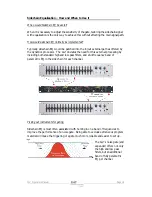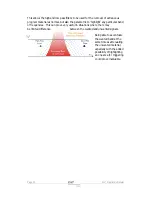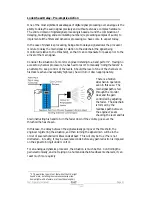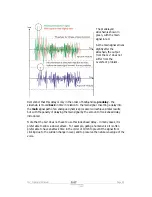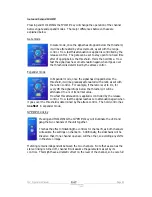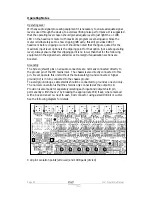
G2
Operators Manual
Page 11
Noise Gate Know-how
Most engineers know the principle reason for using a noise gate – to shut off the
output of some device that, in the absence of the desired output signal, produces (or
passes on) an undesirable level of background noise. The behaviour of the noise gate
is controlled by adjusting, principally, its threshold. This sets the point at which the
level of the desirable signal is deemed quiet enough to turn it off, thereby cutting off
all the background noise as well.
Considering the diagram
shown here, the desired
signal would be the high level
burst and, in between, low
level noise. An example of
this scenario might be the
signal from a bass drum
microphone – a burst of
signal, but perhaps with
unwanted pickup from
lighting dimmers producing a
background buzz.
Setting the threshold just
above the level of the buzz
would keep the gate closed
during periods were the bass
drum was not being played,
only allowing signal through
when the output would be
sufficient to mask the noise
anyway.
The output graph above highlights several other points that are particularly important
with noise gates.
Attack and Release Times.
As the gate opens, there will be a finite delay before the signal crosses the threshold,
cutting off part of the start of the desired signal’s envelope. Similarly, as the signal
drops below the threshold, the gate will close, cutting off some of the end of the
envelope. The diagram above is not truly representative of how the signal
approaching the threshold would be affected.
Содержание G2
Страница 1: ......



















